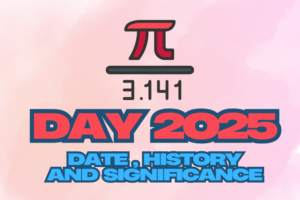Dear Aspirants,
Reasoning Ability is an onerous section. With the increasing complexity of questions, it becomes hard for one to give it the cold shoulder. Today is the Day 11 of the SBI Clerk Prelims Study Plan. The only way to make the grade in this particular section in the forthcoming banking exams is to practice continuously with all your heart and soul. And, to let you practice with the best of the latest pattern questions, here is the Adda247 Reasoning Quiz based on the study plan and the exact same pattern of questions that are being asked in the exams.
Directions (1-5): In the following questions, the symbols $, %, &, @ and # used with the following meaning as illustrated below:
‘P $ Q’ means ‘P is not smaller than Q’
‘P % Q’ means ‘P is neither smaller than nor equal to Q’
‘P & Q’ means ‘P is neither greater than nor equal to Q’
‘P # Q means “P is neither greater than nor smaller than Q’
‘P @ Q’ means ‘P is not greater than Q’
Now, in each of the following questions assuming the given statements to be true, find which of the conclusions is/are definitely true and give your answer accordingly.
Q1. Statement: A & B % C # D $ E,
Conclusion 1. C % E
2. A # C
If only conclusion 1 is true.
If only conclusion 2 is true.
If either 1 or 2 is true.
If neither 1 nor 2 is true.
If both 1 and 2 are true.
Q2. Statement: S % T # Q $ R & P,
Conclusion 1. S % R
2. T $ P
If only conclusion 1 is true.
If only conclusion 2 is true.
If either 1 or 2 is true.
If neither 1 nor 2 is true.
If both 1 and 2 are true.
Q3. Statement: A % B # C $ D, E $ G @ F # D
Conclusion 1. A % F
2. B $ G
If only conclusion 1 is true.
If only conclusion 2 is true.
If either 1 or 2 is true.
If neither 1 nor 2 is true.
If both 1 and 2 are true.
Q4. Statement: M @ N & L $ O, P % Q $ O
Conclusion 1. P $ M
2. M % P
If only conclusion 1 is true.
If only conclusion 2 is true.
If either 1 or 2 is true.
If neither 1 nor 2 is true.
If both 1 and 2 are true.
Q5. Statement: W $ X & V, Y % Z # W
Conclusion 1. Z $ V
2. Y % X
If only conclusion 1 is true.
If only conclusion 2 is true.
If either 1 or 2 is true.
If neither 1 nor 2 is true.
If both 1 and 2 are true.
Directions (6-10): In the given questions, assuming the given statements to be true, find which of the given four conclusions numbered I, II, III and IV is/are definitely true and give you answer accordingly.
Q6. Statements: P ≥ S < R, T = Q > P, U ≤ L < T
Conclusions: I. T > S II. R ≥ T
If only conclusion I is true.
If only conclusion II is true.
If either I or II is true.
If neither I nor II is true.
If both I and II are true.
Solution:
I. T > S (True) II. R ≥ T (False)
Q7. Statements: A = C ≥ E = B, F ≤ G = D < A
Conclusions: I. F ≤ E II. A > G
If only conclusion I is true.
If only conclusion II is true.
If either I or II is true.
If neither I nor II is true.
If both I and II are true.
Solution:
I. F ≤ E (False) II. A > G (True)
Q8. Statements: J ≤ M < K = H, N = S > P ≥ H
Conclusions: I. K = N II. J < S
If only conclusion I is true.
If only conclusion II is true.
If either I or II is true.
If neither I nor II is true.
If both I and II are true.
Solution:
I. K = N (False) II. J < S (True)
Q9. Statements: U ≥ X = V < W, R ≥ T > Y = W
Conclusions: I. T > X II. R > V
If only conclusion I is true.
If only conclusion II is true.
If either I or II is true.
If neither I nor II is true.
If both I and II are true.
Solution:
I. T > X (True) II. R > V (True)
Q10. Statements: G ≤ S = E < W, D > K = A ≥ G
Conclusions: I. D ≤ E II. K ≤ S
If only conclusion I is true.
If only conclusion II is true.
If either I or II is true.
If neither I nor II is true.
If both I and II are true.
Solution:
I. D ≤ E(False) II. K ≤ S(False)
Directions (11-15): In the given questions, assuming the given statements to be true, find which of the given four conclusions numbered I, II, III and IV is/are definitely true and give you answer accordingly.
Q11. Statements: A ≤ B < C, D = F ≤ H, F ≥ G ≥ C
Conclusions: I. H > B II. D ≤ C
III. G = H IV. H < G
Only I is true
Only III and IV are true
Only II is true
Only I and either III or IV are true
None of these
Solution:
I. H > B (True) II. D ≤ C (False)
III. G = H (False) IV. H < G (False)
Q12. Statements: P ≥ Q = R ≥ S, T ≤ U = V ≤ Q, W > R
Conclusions: I. S > W II. T < R
III. P > W IV. V ≤ P
All I, II, III and IV are true
Only II, III and IV are true
Only I and II are true
Only IV is true
None of these
Solution:
I. S > W (False) II. T < R (False)
III. P > W (False) IV. V ≤ P (True)
Q13. Statements: K ≥ U ≤ E = T, L < M < U ≥ H
Conclusions: I. H = T II. E > H
III. E < L IV. E > K
Only I and II are true
Only III and IV are true
Only I and IV are true
Only III is true
None of these
Solution:
I. H = T (False) II. E > H (False)
III. E < L (False) IV. E > K (False)
Q14. Statements: B < Y = G ≤ P, R ≥ S ≥ D = P
Conclusions: I. Y ≤ D II. R ≥ G
III. B < D IV. R ≥ B
Only I and II and true
Only II and III are true
Only I, II and III is true
Only IV is true
None of these
Solution:
I. Y ≤ D (True) II. R ≥ G (True)
III. B < D (True) IV. R ≥ B (False)
Q15. Statements: S ≤ Y = M < B, O > L = M ≥ G
Conclusions: I. S ≤ G II. L < B
III. O < M IV. L ≥ S
All I, II, III and IV are true
Only II and IV are true
Only I and III are true
None is true
None of these
Solution:
I. S ≤ G (False) II. L < B (True)
III. O < M (False) IV. L ≥ S (True)





 GA Capsule for SBI Clerk Mains 2025, Dow...
GA Capsule for SBI Clerk Mains 2025, Dow...
 The Hindu Review October 2022: Download ...
The Hindu Review October 2022: Download ...
 Pi Day 2025, Date, History and Significa...
Pi Day 2025, Date, History and Significa...





